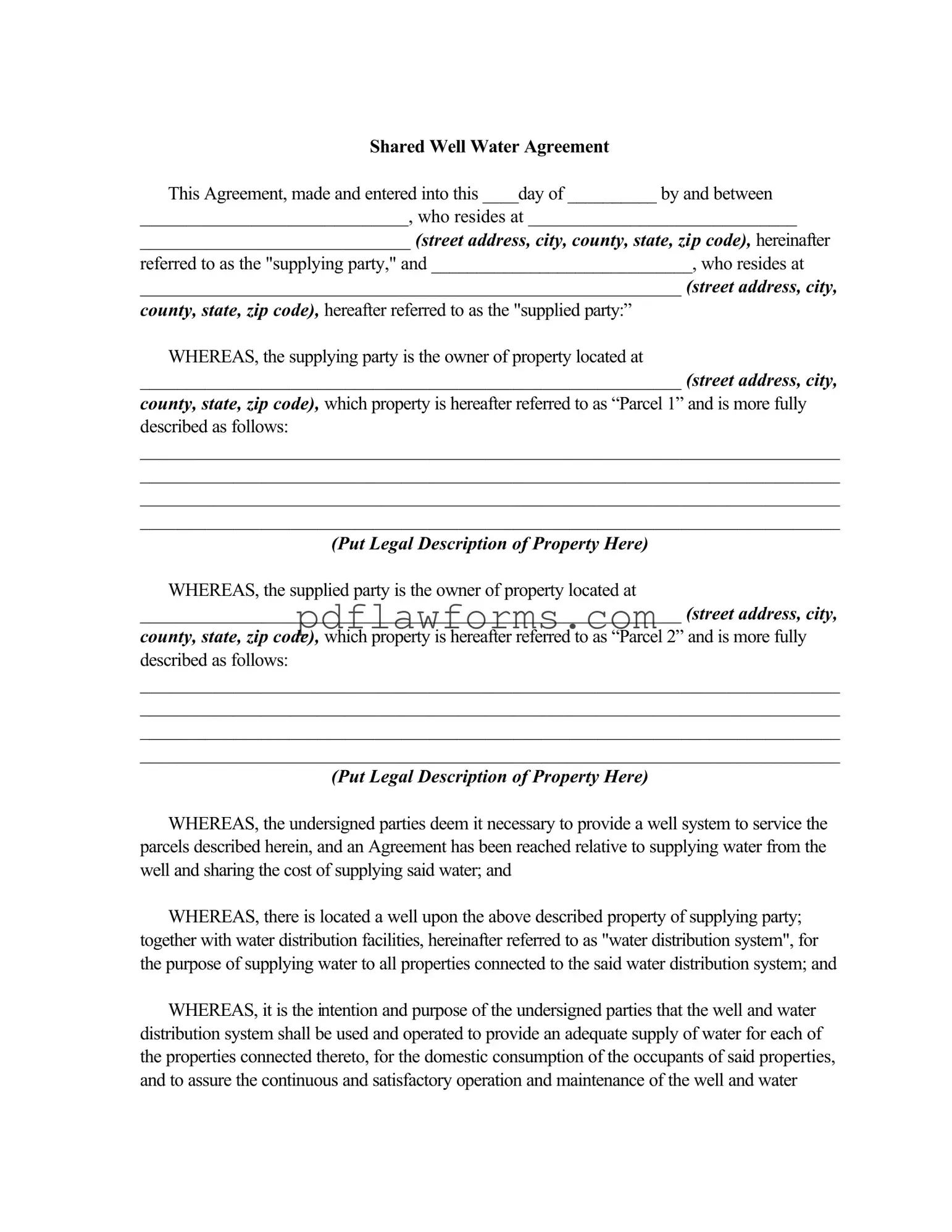Filling out the Shared Well Agreement form can be a straightforward process, but several common mistakes can complicate matters. One frequent error is failing to provide complete and accurate addresses for both parties involved. Incomplete address information can lead to confusion regarding property ownership and responsibilities.
Another common mistake is neglecting to include the legal description of the properties. This description is crucial for identifying the parcels involved in the agreement. Without it, the agreement may lack clarity and could lead to disputes in the future.
People often overlook the importance of specifying the annual fee for the use of the well and water distribution system. Leaving this section blank or failing to agree on the amount can create misunderstandings and financial disputes between the parties.
Additionally, some individuals forget to indicate the payment deadlines clearly. This oversight can lead to late payments and potential termination of water supply. It is essential to establish clear timelines to avoid complications down the line.
Another mistake involves the failure to outline the process for emergency repairs. Not defining what constitutes an emergency or who has the authority to act can create confusion during critical situations, potentially jeopardizing access to water.
People sometimes neglect to include the necessary easements for access and maintenance of the water distribution system. Without clearly defined easements, future property owners may face challenges in maintaining or repairing the system.
Moreover, some parties may not fully understand their obligations regarding shared expenses. Failing to agree on how costs will be divided can lead to disputes over maintenance and repair responsibilities.
Another frequent error is not specifying the consequences of contamination or inadequate water supply. Parties should clearly outline their rights and obligations in these scenarios to prevent misunderstandings in the future.
Lastly, individuals often forget to sign the agreement in the presence of a notary public. This step is essential for ensuring the document's validity. Without proper notarization, the agreement may not hold up in legal circumstances.
By being mindful of these common mistakes, parties can help ensure that their Shared Well Agreement is clear, comprehensive, and effective in governing their shared water usage.
